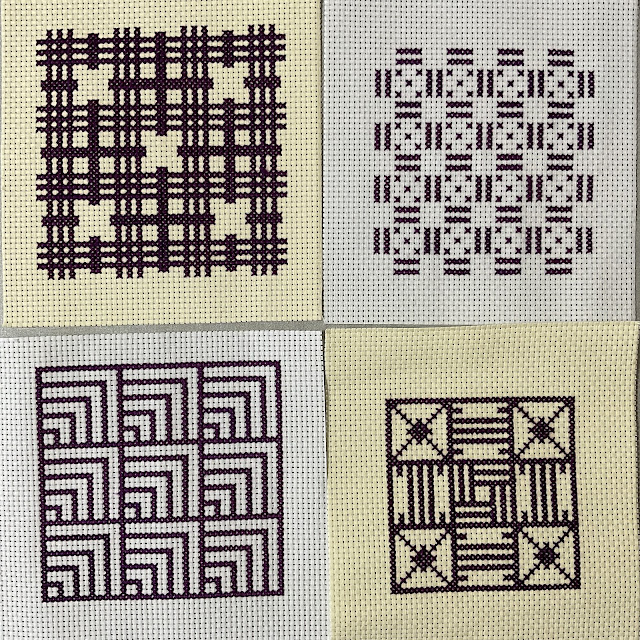I last posted about my WIP/UFO's here. This is my latest update. I've taken out the finished projects and added the newly started ones. Bold titles show the ones I have worked on in 2024. I also wrote if I hope/plan to work on or finish these projects in 2025.
Hexagon Bedspread - plan to finish

Year 3 of the Temperature Quilt - hope/plan to work on
Year 4 of the Temperature Quilt - hope/plan to work on
Year 5 of the Temperature Quilt - hope/plan to work on
The House Quilt - hope/plan to work on
The Trixie Blocks
Ribbon Album Wall Quilt
Summertime Mt. Fuji - plan to finish
Mary Queen of Scots - hope to finish
Bess of Hardwick
Paisley Purse - Deborah Forney - hope/plan to work on
RSN Knot Garden - hope/plan to work on
RSN Rice Fields
Miniature Chair Cushion
Silk Gauze Cat
The Virgin Queen's Pocket - Betsy Morgan
Stitching is finished, but needs to be finish finished.
- plan to finish
Rapunzel Blackwork (Marion Scoular) - plan to finish
EGA Drawn Thread GCC - hope/plan to finish
Blue Hardanger (I can’t find the book with the chart for this one, so I need to remove it from the list).
White Hardanger - Linda Driskell - hope to work on
Dogwood Afghan - hope/plan to work on
Lavender and Lace - The Quiltmaker - hope/plan to work on
Sneek Sampler - hope/plan to work on
Japanese Patterns - plan to work on
Patterns 1 - 4 DMC 311
Patterns 5 - 8 DMC 550
Patterns 9 -12 DMC 223
Patterns 13-16 DMC 304
Patterns 17-20
Patterns 21 - 24 DMC 932
Patterns 25 - 26 DMC 938
Sashiko Table Runner
Temari
Fashionable Ladies
Stitching is finished but needs to be finish finished
Scarf
Stumpwork
I think visiting this list from time to time is helpful. It reminds me what I have that is still unfinished (and also how many things are still unfinished). I do sometimes finish things, but I also keep starting new projects.
Here are some kits/projects I want to start this year.

























































